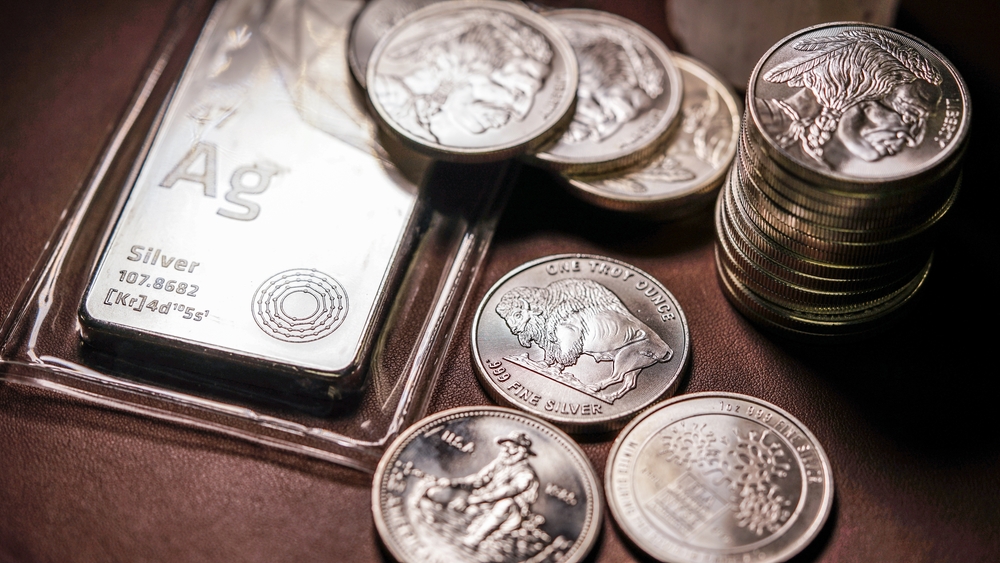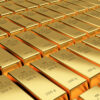For many years, investing in silver has been a well-liked strategy for individuals to diversify their investments with assets that have a lower correlation to stocks, bonds, and other types of investments and to counter worries like inflation and currency devaluation.
What is Silver?
Silver is a valuable metal that is used in a variety of industrial end sectors. It is a commodity. Silver has a long history of usage in coinage, jewelry, and as a store of wealth due to its high value-to-weight ratio.
Five Silver Investment Options
There are various alternatives available to investors who desire to engage in silver, including direct investing (purchasing silver outright) and indirect investing, such as purchasing silver through futures contracts or ETFs (exchange-traded funds). Options consist of:
- Bullions
- Numismatic silver
- Investing in silver mining firms
- Purchasing silver futures contracts
- Purchasing actual silver through ETFs
Some of these alternatives have a high price tag, while others simply give limited or erratic exposure to market silver prices.
Bullion
Most investors who want to own silver in physical form will purchase bullion in the shape of coins or ingots. It’s rather easy to purchase them; an investor may just stroll into a coin shop or a bullion dealer on the street and leave with silver.
When buying physical bullion online, safe transportation and storage are required. If a customer does not wish to store the silver on-site, there are precious metals businesses that will not only sell them real silver (bullion, coins, etc.) but also assist in setting up secure storage for a charge.
Numismatic Silver
A significantly more challenging kind of silver ownership is numismatic silver. Up until 1964, the US Mint issued silver coins that were intended to be used as cash. These coins are prized not just for their silver content but also for their rarity, condition, and appeal to collectors.
Price spreads are frequently large, much like bullion coins, and secure storage is advised. It could be challenging to sell very valuable specimens rapidly for close to fair value.
Silver Mining Stocks
An indirect way to invest in silver is to buy subsurface deposits or the stocks of silver mining firms. Even while the values of the stocks of silver mining companies often increase in tandem with rising silver prices, this is not always the case.
In reality, there might be a big difference between the price of silver and the shares of a silver miner over time. Mining firms must find and utilize silver reserves while doing so profitably so they are more than mere proxies for silver.
Companies that are more adept at finding low-cost resources and mining effectively will outperform less skilled miners and have the potential to outperform the silver market’s fundamental price.
Futures
To acquire exposure to fluctuations in the silver price, investors can purchase or sell silver futures contracts. Although technically, investors have the option to purchase actual silver through futures contracts, it might be challenging to locate retail commodities brokerages that would accept physical delivery.
Investors who select this option may experience much larger gains or losses compared to unleveraged investments due to the high leverage offered by futures contracts. Investors who intend to keep long-term investments must roll their positions since futures contracts have expiration dates.
Rolling futures contracts frequently results in trading costs or rollover fees and might cause value erosion for an investor if the futures curve is upward-sloping. Depending on the size of the contract, they have minimal investment needs.
ETFs
By purchasing shares of a silver ETF that holds real silver or silver futures contracts, investors can indirectly acquire silver. Physical silver is backed by the shares of physical silver ETFs, which are set up as guarantor trusts and controlled by a custodian.
Although physical silver ETFs make every effort to closely follow the spot price of silver, there will always be some underperformance because of the fund fees that are used to cover the costs. Alternatively to purchasing silver bullion in the form of actual ETFs, investors may purchase silver futures contracts.
These ETFs are designed as commodity pools, a type of private investment company that pools investor money to trade commodity futures, and they utilize futures to either mimic spot silver price movements or use leverage to amplify the movement of the underlying silver price.
Risks associated with the futures curve, and notably an upward-sloping futures curve for long investments, are present for ETFs that employ futures. For taxation reasons, futures-based ETFs are considered like futures.
Leveraged ETFs are bad selections for investors who want to hold holdings for a prolonged period of time because they include extra dangers, such as the perpetual leverage trap from daily resets of their leverage.
Researching Investments in Silver
Comparing the research process for individual stocks and corporate bonds to those of commodities like silver reveals significant differences. Check daily updates on inventories in the warehouse and depository, the number of open futures contracts, and metal delivery notices.
In the medium term, supply can be reasonably predictable, but demand will fluctuate greatly depending on the state of the global economy and investor perception of rates of growth, inflation, and interest, all of which are notoriously difficult to forecast.
There are several newsletters and websites that give coverage of the silver market in addition to major brokerages that typically offer coverage of precious metals, including price projections.
Summing it All Up
There are several choices available to investors who want to include silver in their portfolio. Before making an investment, investors should thoroughly analyze their needs and weigh the benefits and drawbacks of different silver investment options.
Holding genuine silver bars, coins, silver mining company stocks, silver-related exchange-traded funds (ETFs), mutual funds that contain physical silver, futures contracts, and directly owning futures contracts are all ways to gain exposure to the metal.






